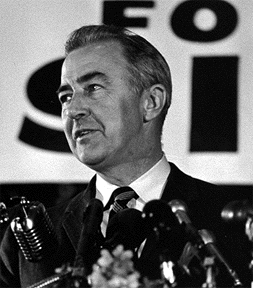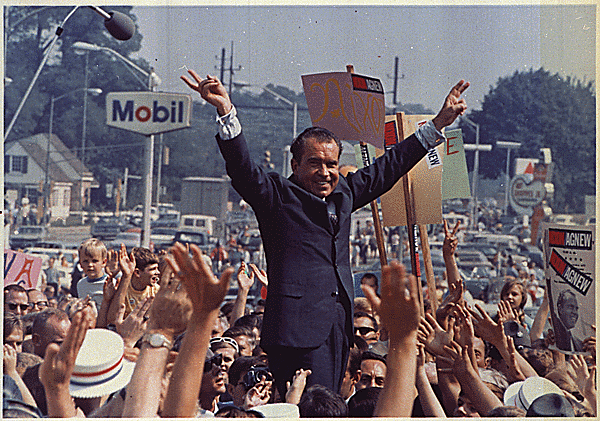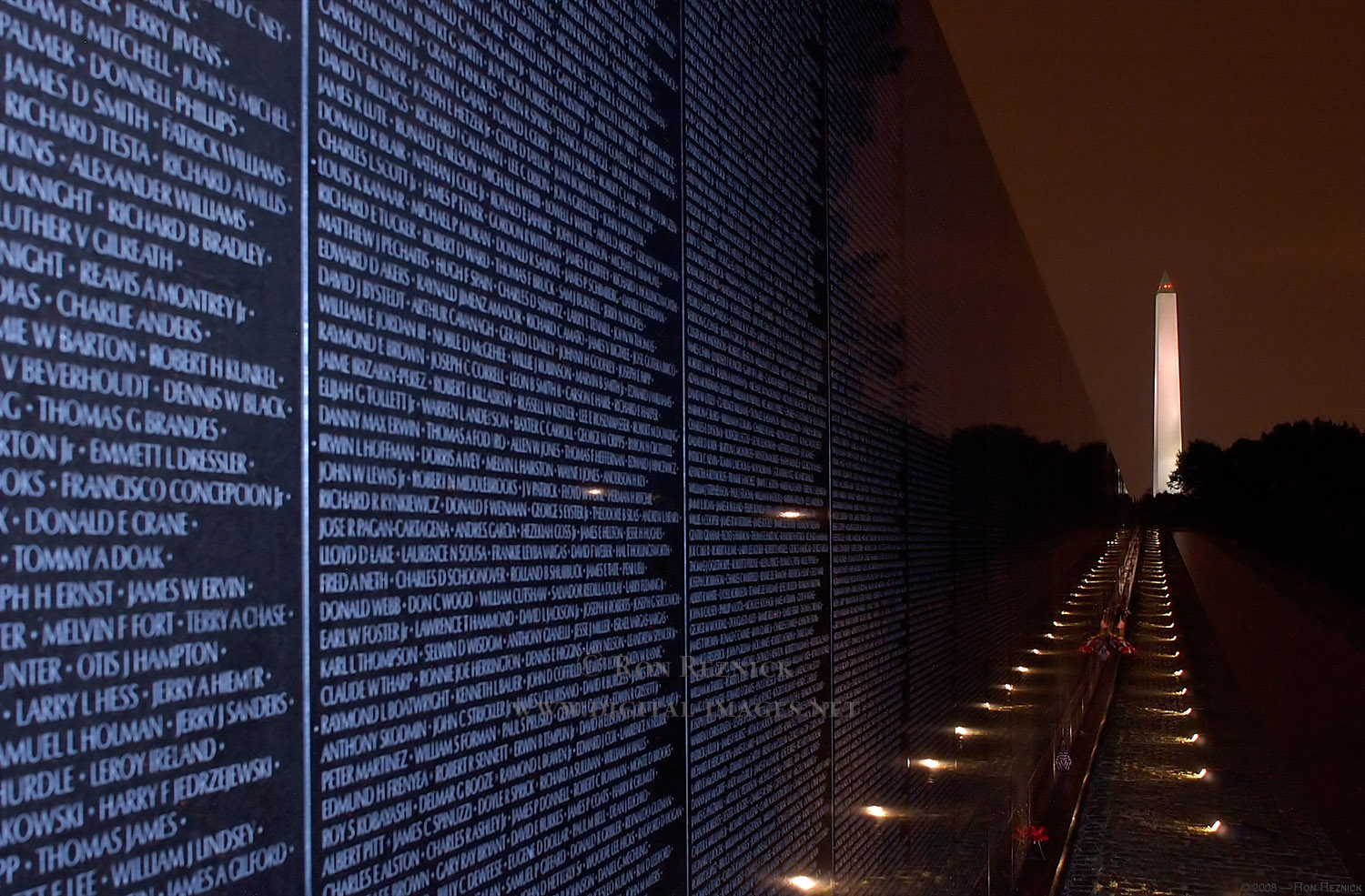Tuesday, November 30, 2010
The Cold War and the Culture War
"Ballad of the Yellow Beret," Bob Seger, recording as Doug Brown
"2+2=?" Bob Seger, Bob Seger System, 1969
Escalation of US Involvement
A) Gulf of Tonkin – the USS Maddox was allegedly “attacked” while offshore from North Vietnam, in disputed seas (North Vietnam claimed the area as sovereign territory, while the US maintained that the waters were international waters).
1) Gulf of Tonkin Resolution – after the alleged attack, President Johnson asked Congress for, and received, authorization from Congress to “take all necessary measures to repel armed attacks against the forces of the United States and to prevent further aggression.”
(a) Gulf of Tonkin Resolution was passed unanimously in the House, and only two dissenters in the Senate (both of whom lost in the next election that they faced.
B) Da Nang
1) USMC – on March 8, 1965, a large force of Marines landed at Da Nang to reinforce an airfield there; by March 13 the Marine expeditionary force was joined by 40,000 other troops, and by late June of that year the Army commander in Vietnam, Gen. William Westmoreland, had received authorization to commit American forces to battle wherever he saw fit.
C) The Undeclared War – as more troops were committed, soldiers and Marines from the United States began to assume more of the responsibility of the fighting in this undeclared war
1) Search and destroy missions – troops from the US forces engaged in the small troop tactic of so-called Search and Destroy missions, where platoons ventured into the jungles of Vietnam, looking for enemy to engage and hopefully kill, or at least locate so that air support could be called in. Most of the time, these patrols found nothing. The fault of these tactics was, of course, that the enemy only engaged their pursuers at the time and place of their choosing
2) The Air War – the US dropped four times the amount of bombs in Southeast Asia than were used by all belligerents during World War II; but this bombing campaign was relatively ineffective against an enemy that was fighting a low tech war anyway—there simply was not much infrastructure to destroy.
3) Weekly body count – each Friday, the military released figures of casualties, which was how the “score” was kept. Each week, the total number of casualties for the North Vietnamese Army and the National Liberation Front, which inevitably were higher than the combined totals for the United States and the ARVN—so we were winning the war, right?
4) Selective Service – because of college student deferments, the burden of service in this war fell inordinately upon the working-class; in fact, Harvard, Yale, and Princeton (the three premier universities in the country) between them only had one alumnus die. George W. attended Yale, drank his way through four years, and then conveniently “served” in the Air National Guard; Albert Gore, Jr. graduated from Princeton, and served in Vietnam—as a correspondent for Stars and Stripes, the newspaper written for members of the military.
D) Tet – Tet is the name for the Vietnamese New Year; after 1968 the word Tet is associated with the beginning of the end of US involvement in the war in Vietnam.
1) “The light at the end of the tunnel” – in January 1968, Gen. Westmoreland declared that the end of the war, now three years along in the involvement of US forces, was at hand, that officers there were confident that they were able to see the light at the end of the tunnel.
2) The Tet Offensive – just after Westmoreland made his observation about the end of the war, the National Liberation Front launched its Tet Offensive. This offensive caught the US and South Vietnamese forces completely by surprise, and NLF forces captured several cities in the south (including the center of religious life in Vietnam, Hue), and threatened to capture Saigon. The NVA had coordinated an attack at a Marine camp called Khe Shanh at this time, and held it under siege for several weeks.
3) Result – the effect of the Tet Offensive, from a military view, was a crushing defeat for the NLF and NVA; the US forces eventually defeated the combined force, and retook all of the lost territory; the NLF in particular was decimated.
II. The War and Domestic Politics
A. Democratic Party 1968--The commander-in-chief, Lyndon Baines Johnson, had just won an overwhelming victory less than four years before, had just persuaded Congress to pass the Voting Rights Act and the Civil Rights Act, and had begun to create the "Great Society" that promised to create a more equitable American society.
1. LBJ--the war consumed Johnson, "that bitch of a war on the other side of the world" in his words--and eventually that war would cost him a second full term as president
2. Hubert H. Humphrey--LBJ's vice-president who, after the contentious Chicago convention, became the Democratic Party candidate
3. Eugene McCarthy--the initial anti-war candidate, and first to challenge Johnson for the Democratic candidacy; his near-defeat of Johnson in the New Hampshire primary led to Johnson dropping out of the race
4. Robert F. Kennedy--entered the race after Johnson withdrew, became the leading primary vote getter in the Democratic primaries in 1968 before he was murdered after winning the California primary
B. The Republican Party--benefited from the disarray of the Democratic Party, and the frustration that many people felt over the direction the country seemed to be heading--what Richard Nixon, the party's presidential candidate, called the "Silent Majority."
1. Richard Nixon and the Southern Strategy--Nixon, seeing the success that Barry Goldwater had making inroads into the formerly solidly Democratic South in 1964, courted Southern whites with coded language, promising to "get tough on crime." Nixon also promised "peace with honor" in Vietnam.
a. US war dead in Vietnam between 1965-1968--36,152
b. US war dead in Vietnam between 1969-1974--21,041
Subscribe to:
Post Comments (Atom)








No comments:
Post a Comment